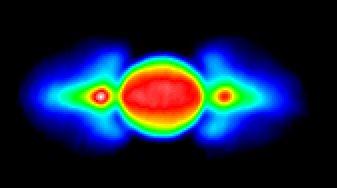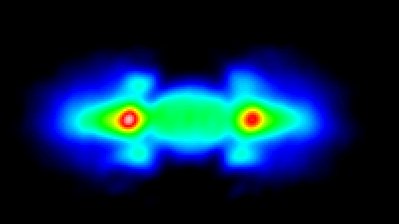Radio Images of Jupiter
Radio Images of Jupiter
The two images shown here are from 10 days of observations with the Australia Telescope Compact Array between 12 and 26 July 1995, and were intended for comparison with observations of Jupiter at the time of impact of Comet Shoemaker-Levy 9.
The observations and imaging are by G. A. Dulk, Y. Leblanc, R. Sault, and R. W. Hunstead. At a wavelength of 13 cm (S band) the bright central region is due to thermal radiation from Jupiter's atmosphere, while at 22 cm (L band) this radiation is much fainter. The bright features beyond the disk are due to synchrotron radiation emitted by relativistic electrons trapped in Jupiter's magnetic field. This radiation is mainly concentrated along Jupiter's magnetic equator, but is also at higher magnetic latitudes as seen by the two ``horns''.
These radiation belts were strongly modified by the collision of Comet Shoemaker-Levy-9 in July 1994. Here, one year afterward, the belts have largely returned to their pre-impact state.
13cm Wavelength Image

This image is available as a downloadable JPEG file for people with non-graphical browsers (7 kbytes).
22cm Wavelength Image

This image is available as a downloadable JPEG file for people with non-graphical browsers (9 kbytes).
